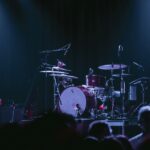With 2023 about to start, now is the perfect time to update our human operating systems.
Here are 11 things high performers tend to get wrong; any of them could be the critical impediment—the thing that stands between them and the next big win.
1) Visualizing success instead of failure
Ideal Outcome visualization is useful for starting the journey, for setting big goals and taking preliminary steps—for creating the roadmap. But we should not use it as fuel. As an energy source, Negative Outcome visualization is far more potent.
To pursue aspirations, targets and daily activities must remain aligned. Fantasies of future rewards and awards won’t work well for this, but keeping the consequences of inaction in mind will.
2) Not having personal protocols
Deficiency-of-character (DOC) issues are a class of feelings that cause inaction; they don different masks, but carry a similar message: “I don’t feel like. . .”
Each time we run into a DOC issue, we attempt to troubleshoot ourselves. Some days, we excel at it; other days, not so much.
People neglect to track their most effective solutions—to create a troubleshooting guide that is about them. Without it, the process of iterating toward better and better solutions becomes glacial.
If it helps, here are some of my protocols:
- When I catch myself being lazy: I will listen to 5 mins of motivational content, then do some Wim Hof breathing
- When I’m feeling fearful: I will read the “Memento Mori” tattoo on my arm, then begin the activity immediately.
- When I’m feeling depleted: I will do 10 minutes of Yoga Nidra.
- When I make a terrible mistake: I will journal until I unearth the principles I violated, then create a protocol to prevent duplicate errors.
3) Using the brain for storage, instead of analysis
Short term memory was never intended for such an information-rich environment. When the brain is used for data storage, it interrupts productive work at all hours to serve up irrelevant reminders that impair focus and reduce efficiency.
Does anyone really need to be reminded 5 times today to grab wine this weekend, even though it’s only Monday?
Does anyone need ten or twenty such alarms going off in their head each day without reason?
I’m always shocked to learn that people don’t rely on note-taking tools. Roam Research and its kin could be used to store everything—reminders, ideas, tasks, projects, podcast/book insights.
This frees up the brain, so it could better think and analyze.
4) Storing tasks in multiple locations and neglecting to revisit them
To know what’s most worth doing when discretionary time appears, it helps for us to have a distanced perspective, so we could work on tasks that move the needle the most.
I’ve met few high performers who use a single location for task storage and fewer who know to review the full list regularly. Again, note-taking software could be used for this.
A person should never enter the forest of activities yet undone and cut down just any tree. Instead, they should scan the landscape first, to pick the right one.
5) Treating sleep as a leisure activity
No matter the undertaking, being properly rested makes a person more effective and increases enjoyment of the task at hand. This makes sleep an occupational activity, but it isn’t respected as such. Few prioritize it and even less optimize it—though they optimize everything else, including less impactful activities.
Fumbled sleep begets a day lost. So Sunday rest should be considered the first of Monday’s critical tasks.
6) Not scheduling breaks
Our bodies follow ultradian rhythms, not only when we sleep—as is commonly known—but also when we’re awake. It goes through cycles of arousal and recovery that permit 90-minute sprints of intense activity.
After each, we should take breaks, to recharge our vigor for the cycles that come after. Plowing straight through is natural for high performers, but it is a suboptimal approach; it just feels productive because humans conflate striving with doing and mistake hours for output.
Always, it is better to cooperate with our biology—to push when it is ready to push, to rest when it is ready to rest.
It is how we get the most done.
7) Not knowing their highest-productivity cycle
If we took a break from stimulants for a week, to track our focus and motivation, each of us would discover a unique window of time in which we are naturally most energized and focused. It helps to know this window, to use it for our most important work, never email or breaks.
8) Diving right into activity on busy days
High performers have a bent for action, and it’s a good thing, most times.
Having a plan for each day is a good idea; having a plan for each busy day is a necessity. If we were granted just one hour to complete 20 errands, most of us would start by planning an effective sequence of activity. Instinctively, there’s an understanding that a blind dash to the land of doing won’t grant us great odds.
Sadly, this is a bit of innate wisdom that seldom extends to longer timeframes.
On our busiest days, we tend to dive right in, knocking out tasks in any order. We must remind ourselves to not do this. If needed, use a reminder—a note, conveniently perched on your work desk. Mine says, “Swamped today? Start with a plan.”
9) Using the phone during breaks
This is a tough one, but only because it’s an entrenched bad habit.
The breaks mentioned in bullet 6 should be used as intended—for recovery. Fixating one’s attention onto a tiny, 6”x3” screen constitutes a focused activity, not rest.
Going for walks, using the bathroom without our phones, socializing with co-workers—these are all activities that allow us to recharge; they preserve our ability to work efficiently.
10) Neglecting to gamify the workday
When we add personal challenges (small, self-directed missions) to our workday, we increase efficiency.
It’s a simple lever to pull that clarifies goals, boosts intensity, forces us to entertain fewer distractions, and increases enjoyment of the task ahead.
Also, it makes flow possible, and this brings a host of additional benefits whenever it’s triggered.
11) Taking warm baths
Each bout of cold exposure gives us a buffer against illness. It also boosts dopamine levels. With more of that feel-good, “go” signal pumping through our bodies, we’re liable to get more done. Scale this up to a one-year timeframe and account for the reduction in sick days, we’re liable to get A LOT more done.
Credits: The content was researched, written, and shared by Rueben Hewitt.
Follow Rueben Hewitt on Twitter for more tips on productivity.
















